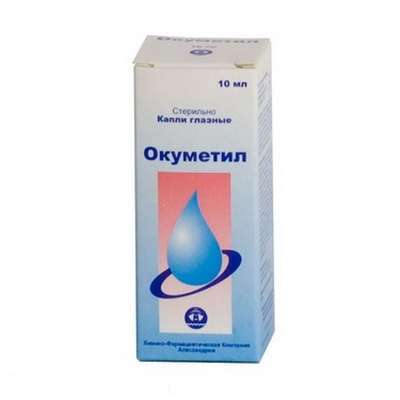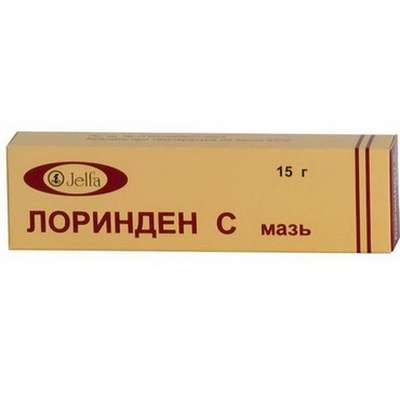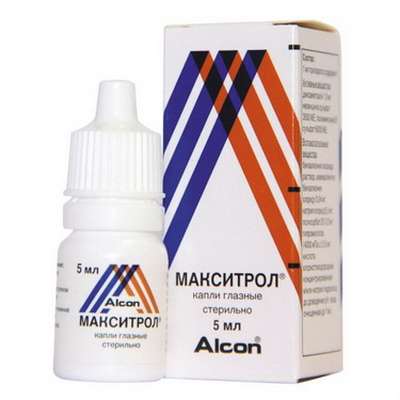Instruction for use: Atracurium besylate (Atracurii besilas)
I want this, give me price
Chemical name
2,2 '- [1,5-pentanediyl-bis [oxy (3-oxo-3,1-propanediyl)]] - bis- [1 - [(3,4-dimethoxyphenyl) methyl] -1,2, 3,4-tetrahydro-6,7-dimethoxy-2-methyl] isoquinolinium dibenzenesulfonate
Pharmacological group
n Cholinolytics (muscle relaxants)
Nosological classification (ICD-10)
Z100 * CLASS XXII Surgical practice
Abdominal surgery, adenomectomy, Amputation, Coronary angioplasty, Angioplasty of the carotid arteries, Antiseptic skin treatment for wounds, Antiseptic Hand, Appendectomy, atherectomy, Balloon coronary angioplasty, Vaginal hysterectomy, The coronary bypass, Interventions in the vagina and cervix, Interventions on the bladder, Intervention in the mouth, Restoration and reconstructive surgery, Hand hygiene of medical personnel, Gynecologic surgery, Gynecological intervention, Gynecological surgery, Hypovolemic shock during operations, Disinfection of purulent wounds, Disinfection of wounds edges, Diagnostic intervention, Diagnostic procedures, Cervical Diathermocoagulation, Long-surgery, Replacing the fistula catheters, Infection in orthopedic surgery, Artificial heart valve, cystectomy, Short-term outpatient surgery, Short-term operation, Short surgical procedures, Krikotireotomiya, Blood loss during surgery, Bleeding during surgery and in the postoperative period, Kuldotsentez, laser photocoagulation, laser coagulation, retinal laser coagulation, Laparoscopy, Laparoscopy in Gynecology, CSF fistula, Small gynecological operations, Small surgical procedures, Mastectomy and subsequent plastic, mediastinotomy, Microsurgical operations on the ear, Mukogingivalnye operation, suturing, Minor surgery, neurosurgical operation, Immobilization of the eyeball in ophthalmic surgery, testectomy, pancreatectomy, Perikardektomiya, The period of rehabilitation after surgery, The period of, convalescence after surgery, Percutaneous transluminal coronary angioplasty, Pleural thoracentesis, Pneumonia postoperative and posttraumatic, Preparation for surgical procedures, Preparation for surgery, Preparation of the surgeon's hands before surgery, Preparation of the colon for surgical procedures, Postoperative aspiration pneumonia in neurosurgical and thoracic surgery, Postoperative nausea, Postoperative bleeding, postoperative granuloma, postoperative shock, The early postoperative period, myocardial revascularization, Radiectomy, gastric Resection, bowel resection, uterine Resection, liver Resection, enterectomy, Resection of part of the stomach, Reocclusion of the operated vessel, Bonding tissues during surgical procedures, Removal of sutures, Condition after eye surgery, Condition after surgery, Condition after surgery in the nasal cavity, Condition after gastrectomy, Status after resection of the small intestine, Condition after tonsillectomy, Condition after removal of the duodenum, Condition after phlebectomy, Vascular surgery, Splenectomy, Sterilization of surgical instruments, Sterilization of surgical instruments, sternotomy, Dental surgery, Dental intervention in periodontal tissues, strumectomy, Tonsillectomy, Thoracic surgery, total gastrectomy, Transdermal intravascular coronary angioplasty, Transurethral resection, Turbinektomiya, Removal of a tooth, cataract surgery, Removal of cysts, tonsillectomy, Removal of fibroids, Removing the mobile primary teeth, Removing polyps, Removing broken tooth, Removal of the uterus body, Removal of sutures, Urethrotomy, Fistula likvoroprovodyaschih ways, Frontoetmoidogaymorotomiya, Surgical infection, Surgical treatment of chronic limb ulcersm, Surgery, The surgery in the anal area, The surgery on the colon, Surgical practice, The surgical procedure, Surgical interventions, Surgery on the gastrointestinal tract, Surgical procedures on the urinary tract, Surgical procedures on the urinary system, Surgical intervention of the genitourinary system, Surgical procedures on the heart, Surgical manipulation, surgery, Surgery on the veins, Surgical intervention, Vascular surgery, Surgical treatment of thrombosis, cholecystectomy, Partial gastric resection, transabdominal hysterectomy, Percutaneous transluminal coronary angioplasty, Percutaneous transluminal angioplasty, Coronary artery bypass, tooth Extirpation, Extirpation of milk teeth, pulpectomy, pulsative cardiopulmonary bypass, tooth Extraction, teeth Extraction, cataract extraction, Electrocoagulation, endourological intervention, episiotomy, Etmoidotomiya, Complications after tooth extraction
Z40 Prophylactic surgical intervention
Inhalation anesthesia, Intratracheal Intubation, Intubation of the trachea, Surface anesthesia in ophthalmology
Code CAS
64228-81-5
Characteristics
A synthetic bis-quaternary ammonium compound, a benzylisoquinoline derivative, a mixture of 10 stereoisomers (in non-equivalent proportions). Molecular weight is 1243.49. The solution is an apyrogenic, clear pale yellow liquid with a pH of 3.25-3.65.
Pharmacology
Pharmacological action - miorelaksiruyuschee, nedepolyarizuyuschee, n-holinoliticheskoe.
High selective, non-depolarizing peripheral muscle relaxant of medium duration. It blocks n-cholinergic receptors of the terminal plate of the neuromuscular synapse and prevents the binding of acetylcholine to them by the type of competitive antagonism and depolarization of membranes of skeletal muscle cells. Oppresses the neuromuscular transmission of stimulation and causes relaxation of skeletal muscles. Causes rapid and easily reversible muscle relaxant effect. The action develops within 1-2 minutes; After iv introduction at doses of 0.4-0.5 and 0.5-0.6 mg / kg, intubation is possible after 2-2.5 and 1.5 minutes, respectively. The maximum effect with doses in the range 0.11-0.6 mg / kg is achieved after 1.7-10 min and depends on the administered dose (after a dose of 0.4-0.5 mg / kg - after 3-5 min) . The average effective dose, causing a miorelaxation by 95%, is 0.26 mg / kg. The duration of the dose effect of 0.3-0.6 mg / kg with balanced anesthesia is 15-35 minutes; The duration of miorelaxation does not correlate with the level of pseudocholinesterase activity of the blood plasma and does not depend on the functional state of the liver and kidneys. Has a slight cumulative ability, the duration of action with repeated administration does not increase. Additional administration against a background of balanced anesthesia is possible at intervals of 15-25 min (intervals slightly longer when combined with isoflurane or enflurane). Restoration of neuromuscular transmission by 25% occurs in 35-45 minutes and by 95% after 60-70 minutes after a balanced anesthesia or 40 minutes after the beginning of the recovery process with inhalation anesthesia. Promotes moderate release of histamine. Has hypotensive effect. In therapeutic doses does not affect consciousness, sensory organs, pain sensitivity, the magnitude of intraocular pressure, does not cause sedative and amnestic effects, malignant hyperthermia.
After cesarean section, it does not cause side effects in newborns (even when large and repeated doses are given to mothers), however, the possibility of developing respiratory depression or lowering the tone of skeletal muscles is not ruled out.
Has a mutagenic activity. In experiments on rabbits, it has embryotoxic and teratogenic effects: it increases the number of postimplantation losses, causes visceral and skeletal anomalies.
Highly binds to plasma proteins. The distribution after intravenous administration is 2-3.4 min. Poorly penetrates the BBB, the placental barrier. Biotransformed by ether hydrolysis with the participation of nonspecific plasma esterases and spontaneously, through non-enzymatic passive transformation into an inactive form (Hoffman's elimination). The main metabolite, laudanosine, does not have muscle relaxant activity, but causes hypotension. It is excreted for 20 min with urine (about 90% in the form of metabolites) and with bile (less than 10% unchanged). Does not cumulate. In elderly patients, the overall clearance is slightly reduced and the volume of distribution increases, while the duration of the effect and the recovery time of neuromuscular conduction do not change.
Indications
Relaxation of the musculature during surgical interventions, endotracheal intubation, IVL (as an addition to general anesthesia).
Contraindications
Hypersensitivity, incl. To myvacuria chloride and other muscle relaxants - derivatives of benzylisoquinoline; Myasthenia gravis.
Restrictions on the use
Hypotension, hypothermia; Severe violations of electrolyte balance, incl. Hypokalemia and hypocalcemia; acidosis; Carcinomatosis; Pediatric practice - children under 1 month of age, premature infants.
pregnancy and lactation
Perhaps, if the expected effect of the application exceeds the potential risk to the fetus and newborn
The action category for fetus by FDA is C.
Side effects
Allergic reactions: due to the release of histamine - skin hyperemia due to vasodilation (5%), erythematous rashes (0.5%), urticaria, pruritus (0.2%), bronchospasm with bronchial hypersecretion (0.2%), laryngospasm, anaphylactoid reactions .
From the cardiovascular system and blood (blood, haemostasis): transient arterial hypertension (2.1%) or hypotension (1.9%), tachycardia (2.1%) or bradycardia (0.6%), up to Cardiac arrest.
Other: dyspnea, inadequate dose due to the strength or duration of the blockade of the neuromuscular transmission, rarely convulsions (on the background of intensive therapy of head trauma, cerebral edema, hypoxic encephalopathy, viral encephalitis, uremia).
Interaction
Strengthen and prolong the effect of inhalation general anesthetics: diethyl ether, halothane (20%), isoflurane and enflurane (by 35%), ketamine, benzohexonium, chlorpromazine, propranolol, some antibiotics (aminoglycosides, tetracyclines, polymyxins, lincomycin, clindamycin, spectinomycin) , Magnesium salts, including sulfate (for parenteral administration), procainamide, quinidine, lidocaine and other antiarrhythmics, diuretics (thiazide, furosemide, mannitol, acetazolamide), lithium preparations (with prolonged administration). Increases the risk of bradycardia and / or hypotension in the background of narcotic analgesics. Causes cross-allergic reactions with tubocurarine and other muscle relaxants that promote the release of histamine. It is pharmaceutically incompatible (it should not be mixed in the same syringe and injected / simultaneously) with barbiturates, including thiopental sodium, and alkaline solutions of the preparations (it is possible to change the acid pH of the atrakury solution, its inactivation or free acid precipitation).
Overdose
Symptoms: prolonged respiratory depression or apnea, hypotension, collapse, prolonged paralysis (by type of myoplegia), shock.
Treatment: the administration of antagonists - anticholinesterase agents, preferably - neostigmine methyl sulfate, at a dose of 1-3 mg IV after 0.5-2 min after preliminary iv administration of 0.25-0.7 mg atropine (to prevent side m- Cholinomimetic effects), with apnea and long-term paralysis - ventilation until complete recovery of respiration; With severe hypotension or shock - vasoconstrictors. It is necessary to re-examine 1 hour after the neuromuscular blockade has stopped to exclude muscle relaxation.
Routes of administration
In / in.
Precautions
Extreme caution is needed in patients with impaired neuromuscular transmission. Use only with antagonists and appropriate means for intubation of the trachea and equipment for ventilation. Cessation of neuromuscular blockade with anticholinesterase agents occurs no earlier than 8-35 minutes.
special instructions
The solution slowly loses activity (approximately 6% per year) under storage conditions at 5 ° C. About 5% of activity is lost within 1 month at a temperature of 25 ° C (can be used if kept at room temperature constantly, but no more than 14 days), do not freeze. It should be taken into account that the solution contains 0.9% benzyl alcohol (as a preservative). When the color is fragmented and / or discolored, the solution is not suitable for administration.

 Cart
Cart





